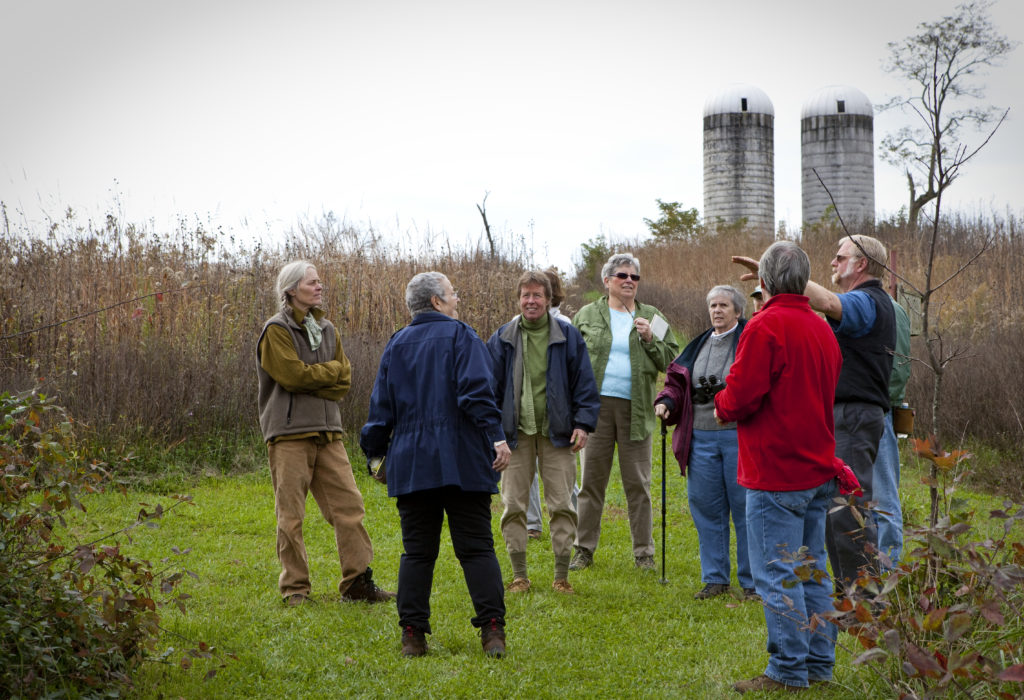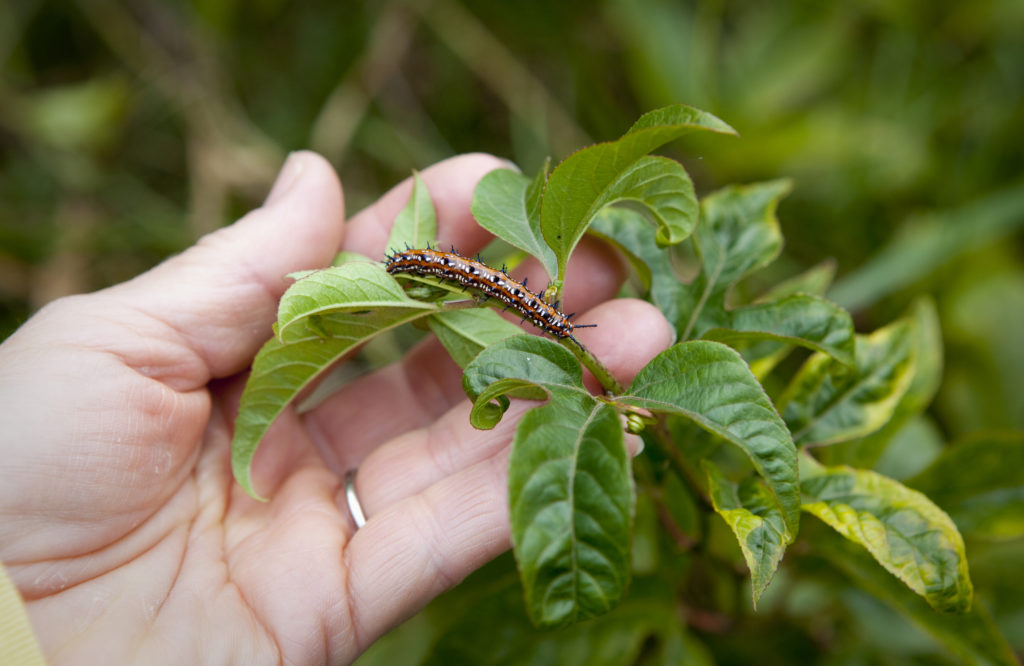Fifteen years ago, Bruce Jones’ research led him to the discovery that, in his words, “Native plants are the basic building blocks for the whole ecology of our area.” So, he and his wife Susan began the epic project of replacing invasive plants with native plants on about 87 acres of their property, now known as the Jones Nature Preserve.
The results were dramatic. They spot wildlife that they never used to see, including a wide variety of birds and pollinators. Several times a year, the Jones host plant walks so that other people can experience this exceptional diversity.
“By exposing people to the beauty of nature, I am hoping for the ‘multiplier effect’,” Jones says. “If others start doing something small to help their natural spaces, we will not only slow the pressure on nature, but we will have something for my grandchildren, and their grandchildren, to observe and appreciate.”
This October, the Jones hosted a plant walk sponsored by PEC, featuring four renowned guest naturalists: Neil Diboll, CEO of Prairie Nursery in Wisconsin; Cole Burrell, president of Native Landscape Design & Restoration; Sally Anderson, president of the Virginia Native Plant Society; and Peter Haus, owner of Enchanters Garden.

Neil Diboll, far right, and Sally Anderson, far left, lead a tour of meadows comprised of native warm season grasses and wildflowers—a rich wildlife habitat. Diboll says, “Since native landscapes require only occasional mowing – not fertilizing or pesticides – they are more economical and require very little energy for their upkeep.”

A variegated fritillary (Eutoieta Claudia) caterpillar is spotted munching on a passionflower plant (Passiflora). Since re-introducing native plants, the Jones have seen a dramatic increase in native caterpillars and butterflies. Because of this abundance, the first North American Butterfly Association survey was held on their land last summer.
All photos by Katherine Vance, PEC.

